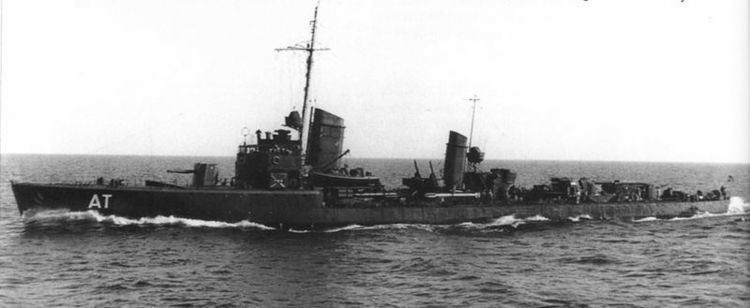In commission 1926–44 Lost 6 | Completed 6 | |
 | ||
Displacement 923 tons (standard)1,290 tons (full load) | ||
The German Type 23 torpedo boat was a class of torpedo boat built for the Reichsmarine following World War I. They were built to replace vessels lost during, or surrendered at the end of, that conflict and were based on the H147 torpedo boat design from then. Six vessels were built in total, and with modifications all six served with the Kriegsmarine during World War II.
The ships were named for birds of prey and were referred to as the Raubvogel class.
They were developed into the Type 24 torpedo boat.
General characteristics
The six Raubvogel (German: "Bird of prey") class torpedo boats were developed from earlier designs shortly after World War I and came into service in 1926 and 1927.
All six vessels were built at Reichsmarinewerft ("Navy Yard"), Wilhelmshaven. They were the first to use electrical welding for hull construction to reduce displacement and they also introduced geared turbines. During the Second World War these ships were referred to as the Möwe class by the Royal Navy.
Despite the innovations, and unlike contemporary German destroyers, the Raubvogels were successful sea-boats, although limited to coastal waters, and most remained in service until 1944, by which time all had been lost. Well before this time, however, the deficiencies of their concentration on torpedoes became apparent: their anti-aircraft weaponry was wholly deficient, and had to be upgraded, and their guns were also minimal.
During the St. Nazaire Raid ("Operation Chariot"), the destroyer HMS Campbeltown was altered by the Royal Navy to look like a Raubvogel class torpedo boat.
